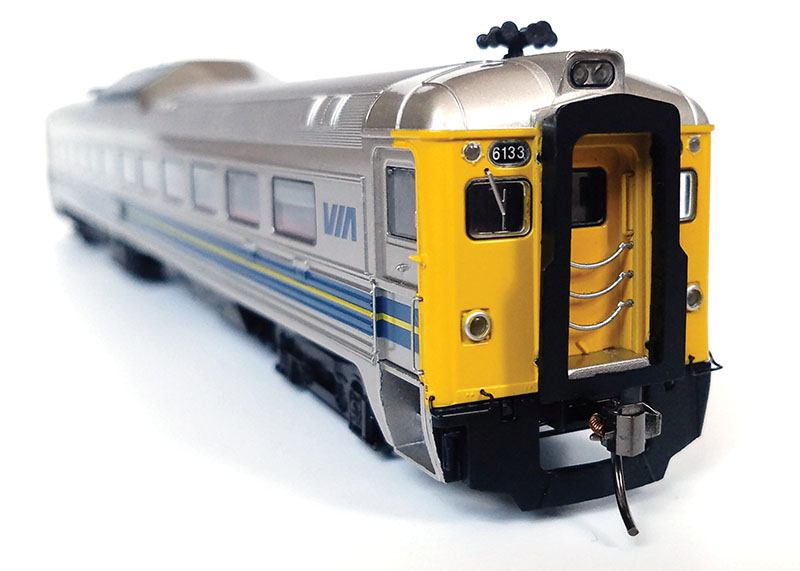 Review by Otto M. Vondrak/photos as noted
Review by Otto M. Vondrak/photos as noted
Despite record-high traffic levels during World War II, American railroads found themselves woefully unprepared for the realities of a postwar economy where operating costs were spiraling out of control as commercial air travel and the interstate highways began to siphon away travelers in record numbers. The railroads were looking for a solution to bring down costs while maintaining a reasonable level of service on less-patronized secondary trains. The answer would come in the Budd Rail Diesel Car (RDC).
Budd was a pioneer in passenger car design and construction, developing some of the earliest streamlined lightweight diesel-powered trains prior to World War II. The Rail Diesel Car or RDC combined the best technological advancements of the era with an easy-to-maintain diesel power plant connected by a hydraulic transmission. Propulsion was provided by two 275-hp (later 300-hp) General Motors Detroit Diesel engines connected by a hydraulic torque converter to the drive gears. Maintenance in the field was a breeze since the diesel engines slid out from their underbody compartments. From the sleek stainless steel body to the comfortable modern interior, complete with air conditioning and fluorescent lighting, the RDC was an instant hit with railroaders and riders alike.
The first Rail Diesel Car prototype debuted in 1949, and five different configurations were offered. The RDC-1 was designed as a coach with 90 seats, while the RDC-2 contained a 17-foot baggage section and 71 seats. The RDC-3 was a Railway Post Office combined with a baggage section and only 49 seats. A baggage and RPO configuration was offered as the RDC-4, with no passenger accommodations. A “blind” coach configuration with no engine controls and 94 seats was marketed as the RDC-9. All were 85-feet long, except for the RDC-4, which was 73-feet 10-inches.

On April 24, 1952, New York Central put one of its RDCs on display at the road’s station in Rochester, New York, just a few days before the introduction of “Beeliner” service between Syracuse, Rochester, and Buffalo. New York Central was the first customer for the RDC, purchasing its first cars in 1950. The railroad would eventually acquire a fleet of 20 cars that were assigned system-wide to local trains in Boston, across New York state, Michigan, and an operation in remote West Virginia. — Courtesy Rochester & Genesee Valley Railroad Museum collection
New York Central (NYC) became Budd’s first customer for the self-propelled cars, receiving RDC-1’s M-450 and M-451 in April 1950. Soon, railroads from coast to coast were ordering RDCs for everything from branch line service to main line commuter runs and everything in between. Boston & Maine had the largest fleet at 130 cars, choosing to eliminate its remaining locomotive-hauled trains around Boston in favor of the self-propelled cars. Canadian Pacific (CP) had 54 cars at its peak, with New Haven (NH) following close behind with 40. Canadian National rostered 27 cars but would later increase this total to 47. Original customer New York Central maintained only 20 units spread out across its entire system.
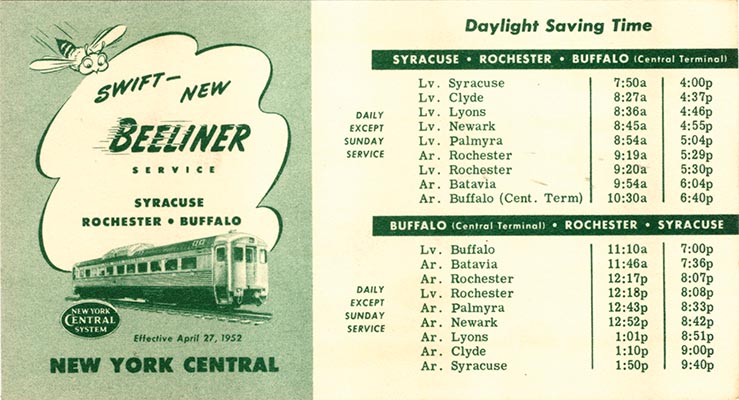
Other northeastern railroads like Jersey Central, Reading, Pennsylvania-Reading Seashore Lines each listed less than 20 cars. Lines in the West and Midwest did not adopt the RDC concept as quickly, with Santa Fe and Western Pacific each ordering two, while Great Northern and Southern Pacific each owned one. Rock Island picked up five units, while Chicago & North Western only had three, despite the railroad’s heavy commuter traffic in the Chicago suburbs. The last production RDCs were a group of 12 built in 1962 for Reading. Total domestic production between 1949 and 1962 totaled 336 units, plus an additional 62 cars for overseas markets, which made for a grand total of 398 RDCs world-wide.
While the casual observer may think all RDCs are alike, several features and updates mark various points in the evolution of the design. Phase I consisted entirely of the first demonstrator car that was produced in 1949 and featured large end windows, roof fluting that extended to align with the side doors, inset headlights, and side number boards. The rooftop blister design was modified slightly when the RDC entered production, and the first ten units were referred to as Phase Ia. Further modifications to the blister housing made up Phase Ib and Ic styles. Starting in 1956, the Phase II units introduced a number of improvements, including larger engines, smaller end windows with number boards above, rooftop-mounted headlights, and larger integral pilots. Truck design transitioned from fabricated to cast sideframes.
As passenger traffic dropped off through the 1960s, Budd RDCs could still be found in great numbers throughout the Northeast in commuter service. Many railroads and transit authorities swapped and sold cars with one another to adjust their fleets to match ridership demands. Thanks to their rugged design and relatively simple mechanical systems, the RDC soldiered on. When I was growing up, I remember Metro-North still using a handful of classic NYC and NH cars for off-peak services on the upper Harlem Line in the early 1980s, before they were replaced by newer equipment. Just as the Budd cars were running off their last miles in Maryland and Connecticut in the 1990s, Dallas Area Rapid Transit acquired a fleet of 13 cars and rebuilt them for use on its Trinity Railway Express service. The cars were retired in 2011 but were briefly operated by neighboring Denton County Transportation Authority for its new start-up commuter line until 2012. In a testament to their longevity, a number of Rail Diesel Cars remain in operation in museums and on tourist railroads across the country more than 60 years after they were first introduced.
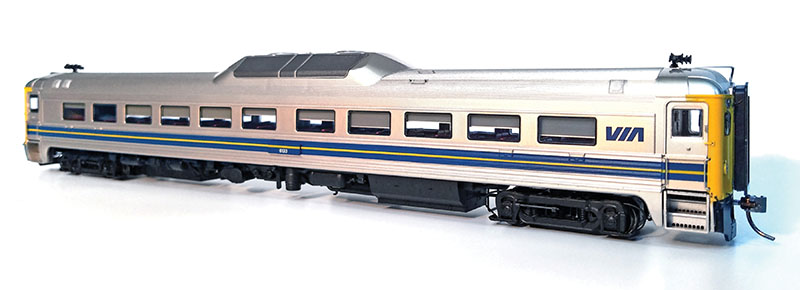
Models produced by Rapido Trains include road-accurate details for its HO-scale Budd RDCs. These details include variations between RDC operated in Canada and the U.S. A second production is in the works for more RDCs from Rapido Trains.
Rapido Trains’ RDC
Model Railroad News’ sample model sent represents VIA 6133, an RDC-1 built for Dominion Atlantic Railway as its 9058 in 1956, one of only two units lettered for this Canadian Pacific subsidiary. The CP later acquired this RDC unit and transferred it to the national carrier VIA Rail after 1978, where it was renumbered 6133. While the unit spent most of its career in the Canadian Maritimes, Quebec, and Ontario, RDC 6133 was also briefly assigned to the former Esquimalt & Nanaimo operation on Vancouver Island, British Columbia.
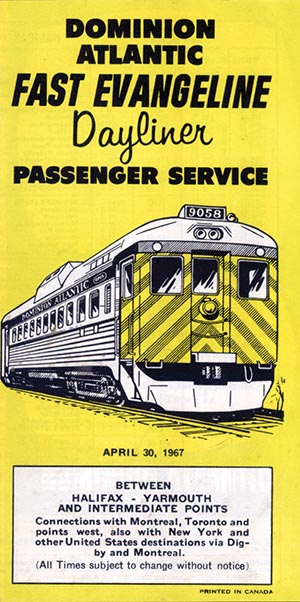 A number of VIA units had been retired and acquired by Industrial Rail Services for possible rebuilding and resale, but by 2015, the company had gone bankrupt and the assets were being sold for scrap. Rapido Trains’ founder Jason Schron decided one of the units was worthy of preservation and purchased RDC 6133 in January 2016. It was relocated to Toronto, where restoration work is currently taking place. It should be noted purchases of HO-scale VIA Rail 6133 models help fund, in part, the restoration of the real full-size 6133! Regular restoration updates are posted to the Rapido blog, and donations to the project can be made at the manufacturer’s website.
A number of VIA units had been retired and acquired by Industrial Rail Services for possible rebuilding and resale, but by 2015, the company had gone bankrupt and the assets were being sold for scrap. Rapido Trains’ founder Jason Schron decided one of the units was worthy of preservation and purchased RDC 6133 in January 2016. It was relocated to Toronto, where restoration work is currently taking place. It should be noted purchases of HO-scale VIA Rail 6133 models help fund, in part, the restoration of the real full-size 6133! Regular restoration updates are posted to the Rapido blog, and donations to the project can be made at the manufacturer’s website.
Unpacking a Rapido model is always a treat. Particular attention is paid to the design of the packaging and the associated graphics, which add to the collectible value. On opening the box, you’ll find the Operating Handbook right on top. The guide contains vital information regarding not only the operation, but also the programming and repair of your Budd RDC (not to mention what to do if you purchased this model from an estate sale in the year 2069). Much like the prototype, Rapido Trains warns against using your model to pull unpowered coaches, as this will put too much strain on the motors and gears and will void the warranty. Also included is an exploded view with parts inventory numbers.
A large sheet of custom decals are included, so you can apply the proper road-specific number boards to your model. The decals are specific to the model, as MRN’s sample came with a sheet that includes Canadian National, VIA Rail, and Rapido Trains graphics. You can use these decals if you want to “patch” over a legacy road name to simulate a car pressed into service for its new owner.
The model itself came packed in a snug plastic clamshell, nestled inside foam packing. All the packaging is designed to protect the details, of which there are plenty. Some RDCs assigned to commuter service in the urban Northeast in the 1970s had protective grilles applied to the cab window to protect the engineers from trackside rock-throwers. This part is included in a special goodie bag full of extra details, including horns, windshield wipers, and coupler cover boxes.
While the Rapido Budd RDC has a fully detailed interior, the windows feature sunshades that are all drawn to random positions, which give the model a “lived in” appearance. Peek inside one of those windows, and you’ll note the carefully molded open armrests on the seats. If you want to admire the interior detail (or add passengers), simply remove the coupler boxes, then gently pry the car sides away from the frame, and slide off the body.
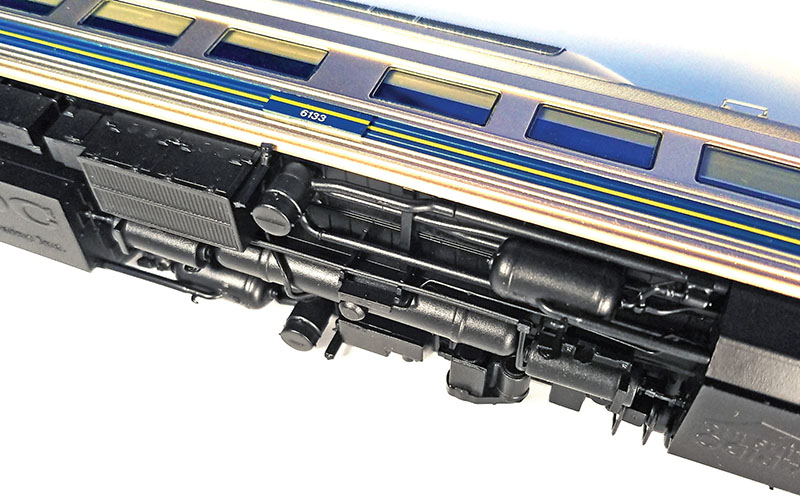
No detail is ignored, including a wealth of plumbing and piping on Rapido Trains’ HO-scale RDC underbody. The model includes a die-cast frame to add to its weight for optimum pulling power.
Rapido’s attention to detail continues to the underbody, including all the appliances and piping you would expect (and even some you wouldn’t… or even know existed). The special attention to individual underbody piping has become the stuff of legends. Founder Jason Schron and his crew will spend days crawling under the prototype to make sure all the details are correct… even for something most modelers won’t see during normal operation! (If, for some reason, you are having more than casual opportunities to view and enjoy the underbody detail of this model, perhaps you are being too rough with your trains.)
The scale proportions of the Rapido model make it about 11½-inches long, which is about an inch-and-a-half longer than the now-vintage Athearn “Blue Box” RDC model many of us knew growing up. Rapido’s RDC presents accurate scale-length, while that classic RDC model from the late 1950s was produced short to navigate tight train set curves better. Perhaps some of you have fond memories of the old Athearn rubber band of Hi-F drive; the new Rapido model employs a silky-smooth drive system that is largely confined to the underbody and employs no rubber bands to accomplish its excellent performance. All four axles are powered, and all wheels provide electrical pick-up. The floor is die-cast metal, which helps contribute to the weight of the model as well.
I have always admired the rich blue-and-yellow VIA Rail colors, and MRN’s sample model of RDC 6133 wears the scheme that was applied to these cars in the late 1980s and lasted through their retirement. Graphics are sharp and stand out nicely on Rapido’s matte stainless steel finish. Fans should note that an “updated” version of 6133 is available for purchase featuring the Rapido Trains logo replacing VIA Rail, representing the unit currently under restoration.
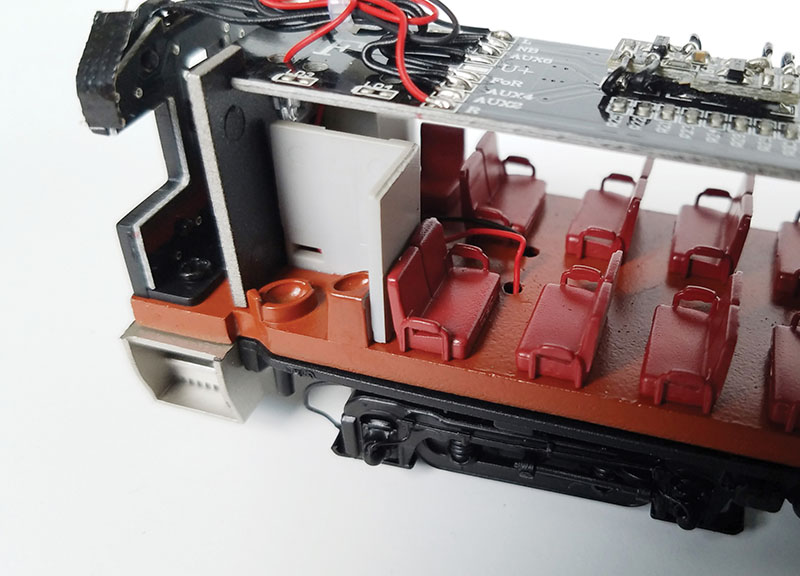
Rapido Trains’ highly detailed HO-scale Budd RDC model includes LED illumination for exterior and interior lighting. The RDC includes a full interior, including restroom facilities!
Besides fine looks and tight engineering, Rapido’s HO-scale RDC also contains a full complement of sound and lighting features. Out of the box, pressing F8 on your controller will fire up “both” engines and bring them up to idle speed. Pressing F3 will simulate the “Straight to 4” operation, where many engineers working in commuter service would put the throttle to Notch 4 (the highest setting) and let the RDC accelerate to top speed. This function is independent of your throttle settings, so you’ll have to turn F3 on and off independent of your speed control in regular operation. The factory default horn is the M3H horn (activated by F2), but you can choose from a selection of appropriate RDC horns by changing control variable or CV 48 while in programming mode. There are two Doppler horn effects; “slow” is activated using F5, “fast” is activated using F11. Pressing F14 will activate the “single-blat” A2 horn, while RDCs that were equipped with a Hancock air whistle can get the appropriate sound by pressing F15.
This HO sample of VIA Rail 6133 features fully functional ditch lights, which are controlled independently by pressing F6. Function F7 will dim your headlight for oncoming traffic, while F9 turns the red marker lights on and off. Like the headlights, the red rear markers will be lit relative to the direction of travel. Rapido provides for the option of an operating Gyralite, which was most often used by Canadian railroads and was a removable device that was hung on the front door. This is an optional detail that can be added by the modeler (thanks to the Gyralite casting included in the “goodie bag” of details packed by Rapido), and the LED is already built into the circuit board. The Gryalite is controlled by F10.
As we have come to expect from Rapido Trains models, details are road-specific. In the case of the Rail Diesel Car, they are country-specific, too, since Canadian railroads chose slightly different options than their American counterparts. So this sample model of VIA 6133 has certain variations that are specific to this prototype. The Handbook will tell you which details are appropriate for specific roads and timeframes. It almost sounds cliché to say that no detail is left untouched, but in the case of this model, it’s true. Model Railroad News’ sample includes all the features found in a typical Phase II-bodied RDC.
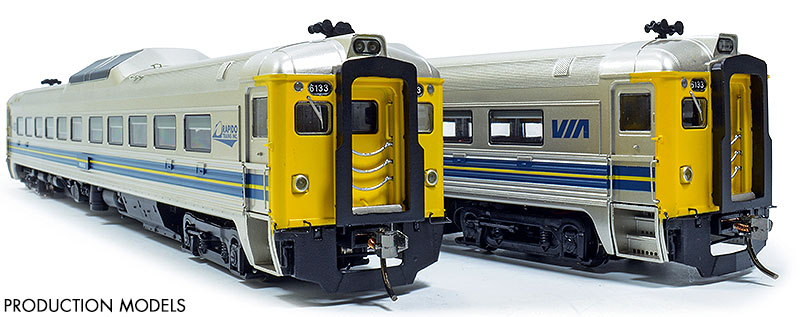
The model of No. 6133 is available with Rapido or VIA markings. Proceeds from the sales of these models goes toward the continued repair and restoration of the real 6133 owned by Rapido. Follow their restoration blog and consider making a donation. —Photo by Rapido Trains, Inc.
I brought the sample down to the local model railroad club to put the RDC through its paces. Running in silent mode, I cranked up the controller to 128 and watched as RDC 6133 smoothly accelerated up to top speed, which Rapido factory-set to a prototypical 98 mph. This is pretty much how I test all my new trains, and I’m not ashamed to admit that. Once I got the speed demon out of my system, I went to the opposite end of the spectrum and enjoyed the “super-creepy” slow speed operation. Then it was time to have fun with all the lights and sounds. Rapido recorded actual RDC sounds on the Conway Scenic Railroad in New Hampshire, so the model has a full range of expression, from idle to Notch 4. There’s even a “start-up” sequence that begins with the fuel pump noise, and then each engine being turned on, followed by the air brakes pumping up (don’t worry, you can skip this step and go right to regular operation). A very nice performance thanks to the installed ESU LokSound decoder. Like all scale-length passenger cars, you’ll get more reliable operation on broad radius curves like on the club model railroad on which I tested our sample. Though the company recommends a minimum 26-inch radius, I found the RDC was able to negotiate tight 18-inch radius curves without difficulty.
I have been impressed with all of the offerings from Rapido Trains, and this Budd Rail Diesel Car is no different. You won’t find a better RDC model that offers such fine detail right out of the box. From its scale proportions, road-specific features, and smooth engineering and performance, this model clearly stands up to its claim of being the “absolute” example of a Budd RDC. The RDC presented in this review, VIA 6133, is an exclusive release only available direct from Rapido Trains.
According to Rapido, the first run of absolute RDCs was its best-selling model ever, which has encouraged the company to announce a second run, which will include RDC-2 and RDC-3 variations, as well as new paint schemes for the RDC-1. Continuing its commitment to railway preservation, Rapido is releasing a special set of Santa Fe’s only two Rail Diesel Cars, DC-191 and DC-192, with a portion of sales donated toward the restoration of the real DC-191 by the Pacific Railroad Society. For the complete listing of models and paint schemes, and to place your reservations, please check with your local hobby dealer or visit Rapido Trains online.
Rapido Trains
500 Alden Road, Unit 16
Markham, ON L3R 5H5 Canada
855-572-6917
HO-scale
Budd Rail Diesel Car (RDC)
#16595 – VIA 6133 Rapido Exclusive
MSRP $325.00
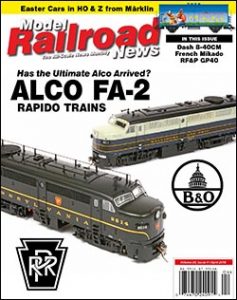 This review appeared in the April 2018 issue of Model Railroad News
This review appeared in the April 2018 issue of Model Railroad News


